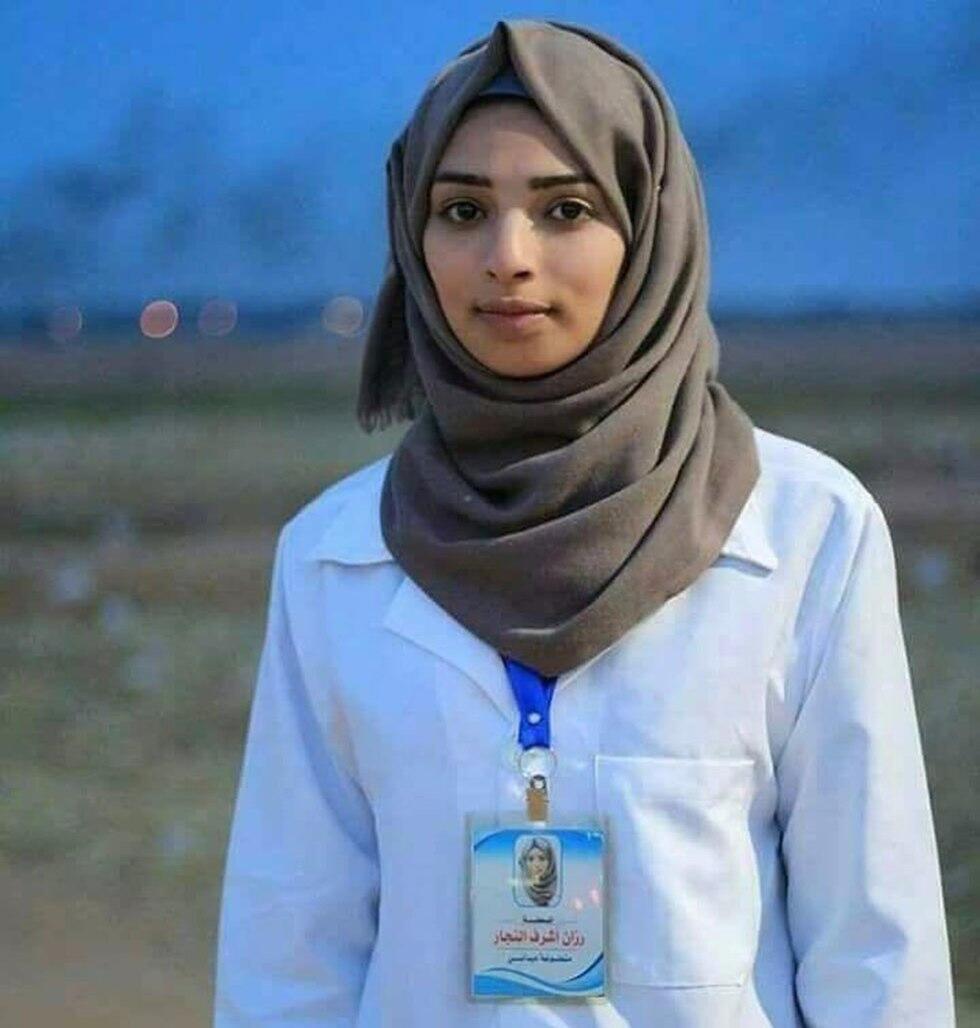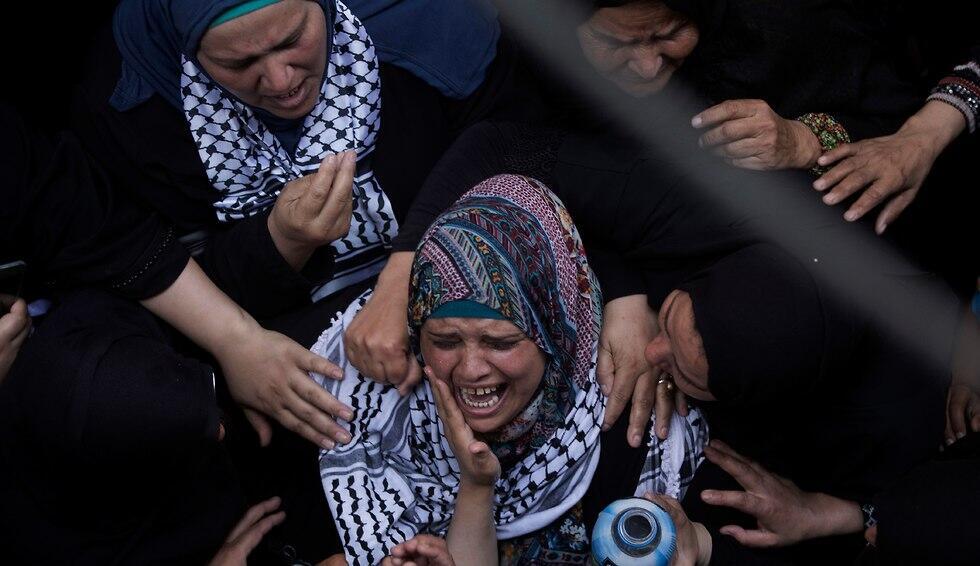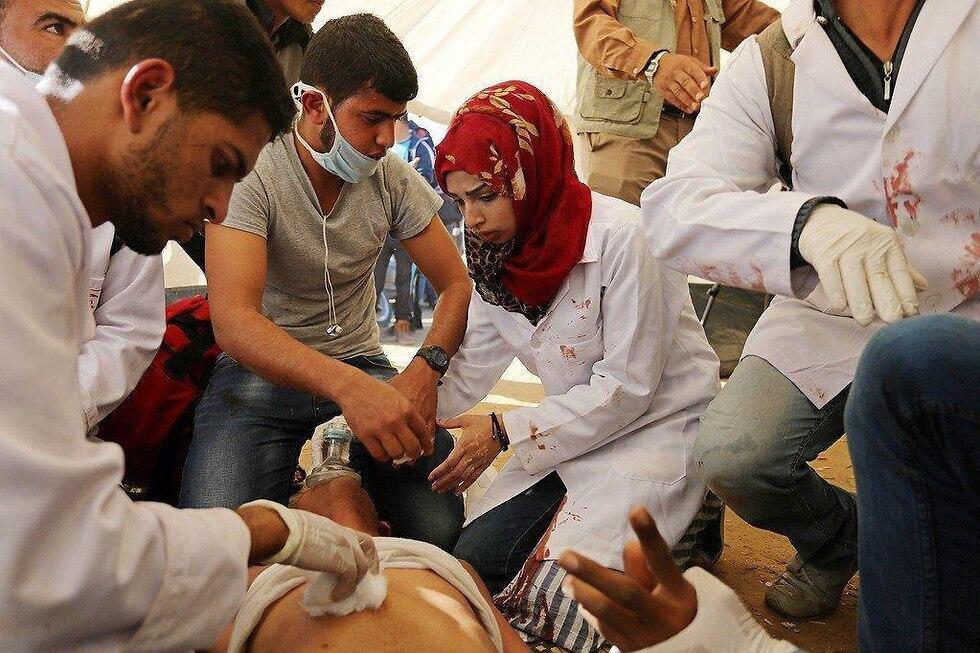Getting your Trinity Audio player ready...
The New York Times claimed Sunday that the death of a Palestinian medic by Israeli army gunfire in Gaza in June was "possibly a war crime." The claim comes in a lengthy investigative article on the death of Rouzan al-Najjar, a 20-year-old paramedic who was killed by Israel Defense Forces fire during protests at the Gaza border fence during a summer of violent clashes.
and Twitter
The article calls the shooting “reckless at best, and possibly a war crime, for which no one has yet been punished."
According to the paper, the “bullet that killed (al-Najjar) was fired by an Israeli sniper into a crowd that included white-coated medics in plain view. A detailed reconstruction, stitched together from hundreds of crowd-sourced videos and photographs, shows that neither the medics nor anyone around them posed any apparent threat of violence to Israeli personnel.”
The New York Times said that the IDF reported four cases of sniper fire during the day's clashes. The army said that all of the targets were men, and all four were hit in the lower limbs, but the paper said it was only able to locate three of the four.
Rouzan al-Najjar
(צילום: דובר צה"ל)
The article paints Najjar as a heroic figure, who was unfraid to put herself in danger to help others.
"Nearly everyone who saw Ms. Najjar at the protests was struck by her readiness to place herself in harm’s way," the report says, "the first to those in trouble, the last to safety."
The article intersperses a retelling of the events of that day with recollections from Najjar's family, friends and acquaintances. Recounting the moments of her shooting, the paper writes: "Ms. Najjar reaches for her back, then crumples... (She) is picked up by protesters she had treated just a few minutes ago. As they carry her off, blood pours from her chest."
After Najjar’s death, an initial IDF investigation found that a small number of shots were fired during the incident, but that troops didn’t fire directly at the medic. The IDF believes that Najjar likely died as a result of a ricocheting bullet. The Times’ investigation also found that “the bullet hit the ground in front of the medics, then fragmented, part of it ricocheting upward and piercing Ms. Najjar’s chest.” The bullet, the paper says, came from a sniper’s post some 110 meters (120 yards) away from where Najjar was standing when she was hit.
The head of the IDF International Media Branch, Lt. Col. Jonathan Conricus, told the NYT that Najjar “was not the target,” and that “none of the medical personnel are ever a target.” The IDF has concluded that the young medic was shot by accident, but the Times found no record of an IDF soldier reporting a misfire during the incident.
A week after Najjar’s death, IDF Arabic spokesman posted a video on Facebook showing Najjar throwing tear gas, and said that Hamas was using her as a human shield. Palestinians sources said that the medic was shot while raising her arms up in the air.
The IDF said in response to the article that that “the Military Police Criminal Investigation Division is conducting its investigation regarding the death of Rouzan al-Najjar. The Military Advocate General will receive the investigation's findings once it is finished.”
The New York Times says it used 1,000 photos and videos taken during the riots that day by journalists, medical personnel and protesters.
According to the paper, their investigation included an examination of Najjar’s autopsy records, conversations with her family and friends, interviews with 30 “key witnesses,” Gazans at the scene and senior IDF officials, as well as crime scene investigators and ballistic experts. Their reporters also visited the site of the shooting and digitally recreated the incident using drone footage to create a 3D image of the scene. Videos from phones belonging to other Gaza paramedics were used to pinpoint their location at the scene during the shooting.







